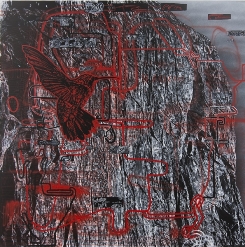1. Define the term 'pluralism' using APA referencing.
Pluralism in art refers to the nature of artforms and artistsas diverse. The cultural context of art is all encompassing in its respect for the art of the world's cultures. Inclusion of individuals of differing ethnicities, genders, ideologies, abilities, ages, religions, economic status and educational levels is valued. Pluralism honours differences within and between equitable groups while seeing their commonalities.
2. How would you describe New Zealand's current dominant culture?
There can be marked differences between Maori and NZ European (Pakeha) societies and culture.Due to colonisation and tribal differences, there can also be subtle but important variations in protocols. New Zealand is getting more connections to the word, especially Auckland becomes more international meropolis. At the mean time New Zealand still leading their own country culture (Maori) and put it as for dominant culture. Nowadays New Zealand becomes better due to their fast develop and popular Maori culture.
3. Before 1840, what was New Zealand's dominant culture?
By the time the Treaty was signed in 1840, British and Maori were no strangers to each other. Before 1840 Maori culture was New Zealand domiant culture, this was a small country that only Maori people lives, after time goes by some traders had become permanent residents on the coast, and had begun to live in Maori villages and marry Maori people. After that New Zealand's dominant culture turns changed and share their space with white people.
4. How does the Treaty of Waitangi relate to us all as artists and designers workingin New Zealand?
Based on Treaty of Waitangi British chose to enter into a contract with Maori people and they started mix art culture. New Zealand exchanges with other countries such like artists and designers, they've got more chance to learn and create new art works. British art culture has a long history more than Maori so that after the Treaty of Waitangi artists which was in New Zeanland relate to different art area.
5. How can globalization be seen as having a negative effect on regional diversity in New Zealand in particular?
Globalization is the tendency of businesses, technologies, or philosophies to spread throughout the world, or the process of making this happen. In my perspective that globalization be seen as having a negative effect on regional diversity in New Zealand in particular because of it geographical position remote, also New Zealand is not a strong economic power country so there was kind of negative effect influnence happened.
6. Shane Cotton's paintings are said to examine the cultural landscape. Research Cotton's work 'Welcome'(2004) and 'Forked Tongue' (2011) to analyze what he is saying about colonialization and the Treaty of Waitangi.
'Welcome' (2004) Shane Cotton
'Forked Tongue'(2011) Shane Cotton
In paintings such as “Forked Tongue”,he is saying about which features a cliff face, a fantail, some Maori designs and a tracery of red lines these symbols or metaphors become starting points for an elaboration on the links between the physical, historical and spiritual landscapes. All the works in the exhibition seem aged and fractured with an almost medieval feel to them. However, they also contain images which seem to provide hope with the images of natural images and lines which trace over these them suggesting links to the past and the future.
7. Sorry commemorates the apology on 13 February 2008 by the former Prime Minister of Australia, Kevin Rudd, to Indigenous Australians who have suffered as a result of ‘past mistreatment’ by the Government of Australia. Yet, Tony Albert is neither championing hopeless blind optimism nor pessimism through his work. Aboriginal people have been offered many broken promises. Here, Albert and his army of kitsch faces, has taken this word on face value until real change is observed.
kitsch is a form of art that is considered an inferior, tasteless copy of an extant style of art or a worthless imitation of art of recognized value. 'Tony Albert 'Sorry' (2008)
8. Explain how the work of both artists relates to pluralism.
Pluralism in art refers to the nature of artforms and artists as diverse. The cultural context of art is all encompassing in its respect for the art of the world's cultures. Inclusion of individuals of differing ethnicities, genders, ideologies, abilities, ages, religions, economic status and educational levels is valued. Pluralism honors differences within and between equitable groups while seeing their commonalities.
http://www.design.iastate.edu/NAB/about/thinkingskills/cultural_context/pluralism.html
http://en.wikipedia.org/wiki/Kitsch
http://www.kwintessential.co.uk/resources/global-etiquette/new-zealand.html
http://qag.qld.gov.au/collection/indigenous_australian_art/tony_albert



hey Yi, im agree with your opinion, actualy about Shane and Tony's seems like they both stick to creatvie the ideas of the artworks they had made. and also focus on the culture, history and related to the artworks of the counrty.
ReplyDelete